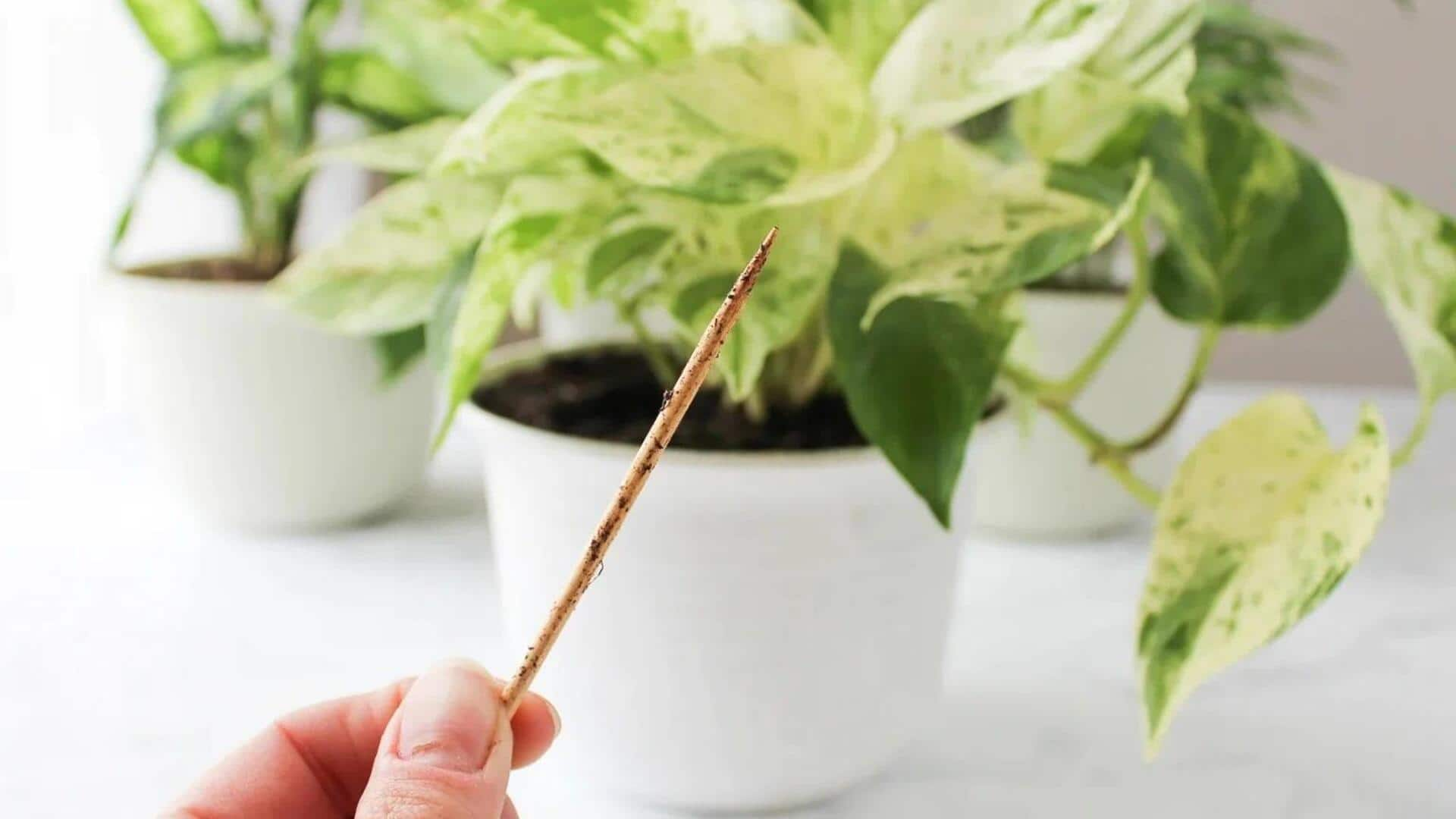
Chopsticks for plants: A must-try gardening hack
What's the story
Efficient watering is key to healthy plant growth and one simple tool can make a world of difference: chopsticks. By aerating plant soil with chopsticks, you can improve water absorption and root health. This method is cost-effective and easy to implement, making it accessible for both novice and experienced gardeners. The process involves creating small holes in the soil, allowing air to circulate more freely and helping prevent overwatering issues.
Air circulation
Benefits of soil aeration
Aerating the soil with chopsticks enhances the air circulation around the roots. This increased airflow helps roots access oxygen more efficiently, promoting healthier growth. When roots receive adequate oxygen, they're better able to absorb nutrients from the soil. Improved air circulation also reduces the risk of root rot by preventing excess moisture buildup.
Moisture control
Preventing overwatering issues
Using chopsticks to aerate plant soil helps you control moisture levels. By creating tiny holes in the soil, water can go deeper instead of collecting on the surface. This way, plants get an even distribution of water across their root systems. Proper moisture control reduces the risk of overwatering resulting in wilting or yellowing leaves.
Budget-friendly
Cost-effective gardening tool
Chopsticks make an inexpensive tool for gardeners looking to upgrade their plant care game without shelling out much money. Commonly available for next to nothing or free with takeout, they are a cost-effective option for improving soil aeration. Their slender design makes them convenient to use and navigate around fragile plants without harming them.
Simple technique
Easy implementation process
Using chopsticks for soil aeration is easy and doesn't require any special skills. Simply insert a chopstick into the soil at different points around the base of the plant (while avoiding major roots). Gently rotate before removing to loosen compacted areas, allowing air pockets to form in the potting mix. This method is key to maintaining optimal growing conditions indoors or outdoors.